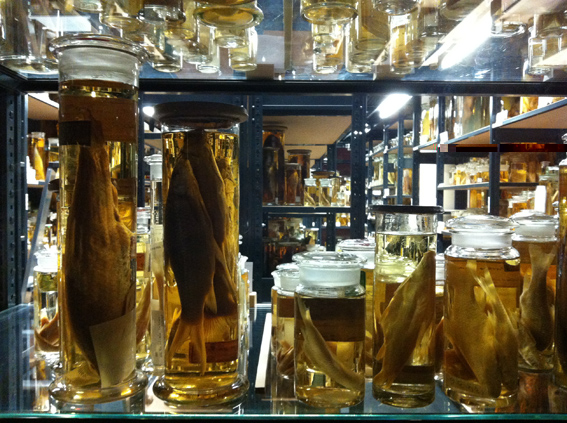
© » KADIST
Hikaru Fujii
The film The Anatomy Classroom is part of a research project developed by Hikaru Fujii around objects and artifacts evacuated from the Futaba Town Museum of History and Folklore, which is located in the “difficult-to-return zone” since the Fukushima Daiichi nuclear accident. In order to avoid radioactive contamination and biological damage, the objects have been removed from the museum, where they were once part of a collection that the curator had developed over twenty years to represent the local community and its long history on the land. Fujii has been closely following the movements of these historical objects, while organizing visits to the site and hosting discursive events on the crisis of memory and culture.

© » KADIST
Hikaru Fujii
Les nucléaires et les choses by Hikaru Fujii is the first video produced in the artist’s long-term project focusing on the Futaba Town Museum of History and Folklore, located in the “difficult-to-return zone” since the Fukushima Daiichi nuclear accident in 2011. Over four years, Fujii filmed the rescue and displacement of this museum’s collection of archeological, historical, or cultural artifacts outside the zone, in order to avoid radioactive contamination and biological damage. He followed the actions, gestures, and reflections of the Futaba Museum curator Takamitsu Yoshino and his collaborators, charged with the preservation of these objects and the knowledge they contain about the territory they come from and the life of its community, struck by the disaster.

© » KADIST
Hikaru Fujii
COVID-19 May 2020 by Hikaru Fujii was filmed during the first months of the Covid-19 pandemic. For this work Fujii filmed the group exhibition Things Entangling, the final phase of a collaboration between KADIST and the Museum of Contemporary Art, Tokyo. At the time that the first Covid-19 lockdowns were instated in Japan, the exhibition was fully installed, but it was not accessible to the public for an indeterminate duration.

© » KADIST
Emma Wolukau-Wanambwa
A short video about Tate Modern by Emma Wolukau-Wanambwa depicts just two shots, both featuring the artist. The first scene portrays Wolukau-Wanambwa in a close-up frontal view, dressed in black, standing silently against a worn white wall. Through subtitles, the artist recounts her experience of participating in a workshop on the top floor of the museum.
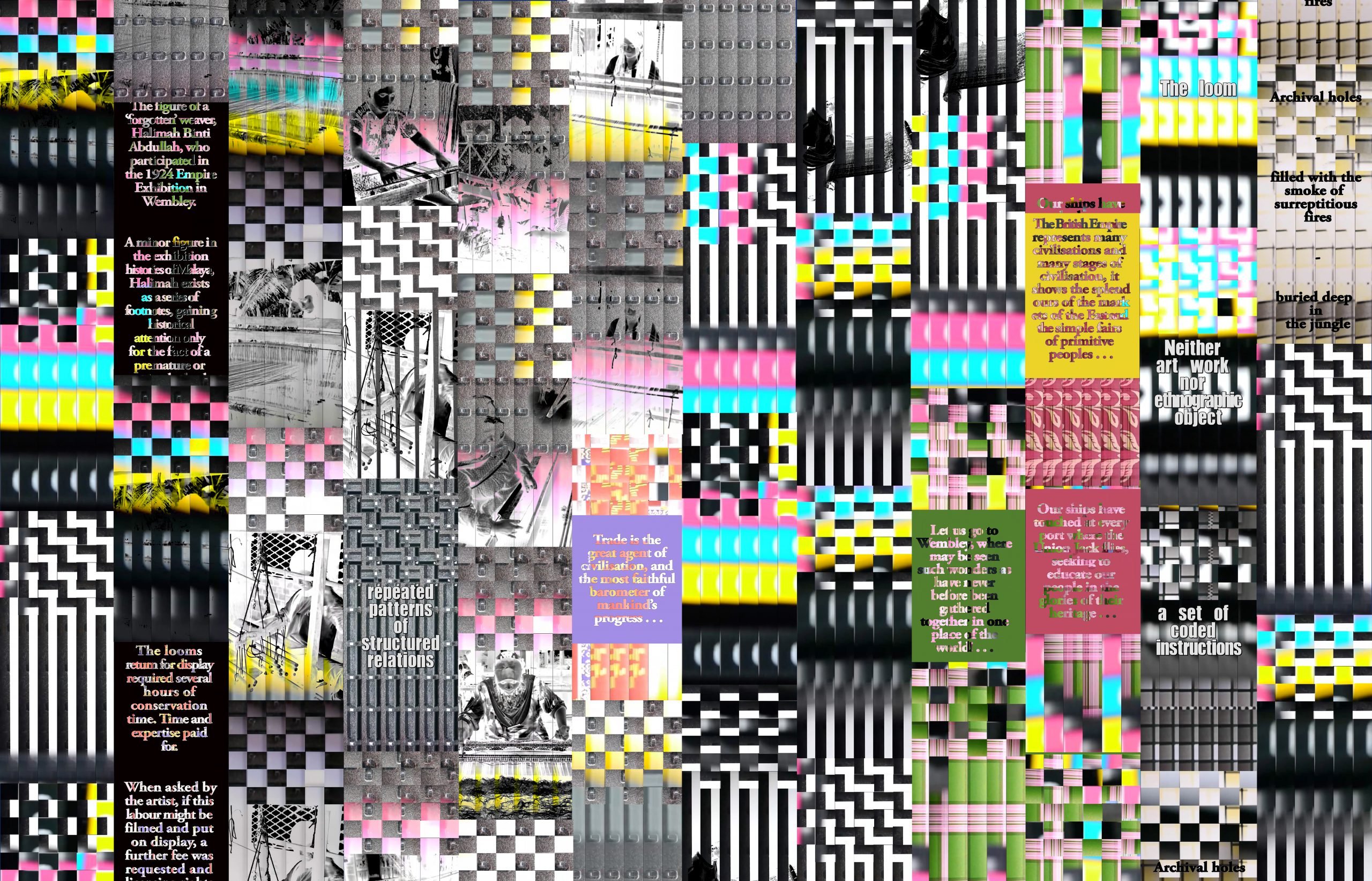
© » KADIST
Erika Tan
Part of an installation commissioned by National Gallery Singapore, The Weaver’s Lament by Erika Tan addresses the invisibility of women textile artists and their labor. Tan’s video focuses on the story of a forgotten weaver, Halimah Binti Abdullah, who participated in the 1924 British Empire Exhibition in the United Kingdom. A minor figure in the exhibition histories of what was formerly known as Malaya, Abdullah’s loom was left behind at the end of the exhibition, now residing in the Victoria and Albert Museum.

© » KADIST
Arseny Zhilyaev
His large installation entitled The Museum of Proletarian Culture (2012) looked at the changes in artistic practice that have occurred in Russia throughout the last thirty years – from the amateur art of the late Soviet era to the commercialized post-Soviet cultural practices and the more recent self-expression via contemporary social networks. Thus, the exhibition becomes a whole installation where it is impossible to distinguish architecture from assemblage, facts from fantasy, document from fiction. It is a museum of museums where viewers find themselves in the era of didactic exhibitions; whereby the main protagonists are workers, engineers, and amateur artists, and finally replaced by the creative class of 1990s and 2000s.

© » KADIST
Ícaro Lira
Icaro Lira has been developing the project “Museum of the Foreigner” since 2015, in which he recounts the trajectories of populations inside Brazil, from the north to the big cities of the south. The artist is himself Nordestin and moved to Rio to study cinema before enrolling at art school. The term “museum” is ironic, it evokes the institution and with it, the official history that the artist seeks to deconstruct by creating multiple stories that intertwine.
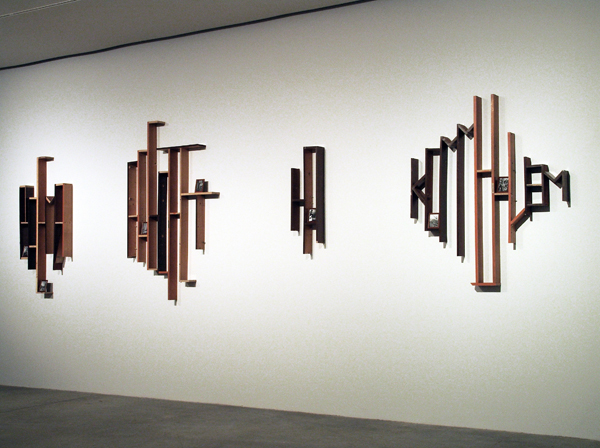
© » KADIST
Arseny Zhilyaev
Arseniy Zhilyaev (born 1984 in Voronezh, Russia) is an artist, writer and political activist who lives and works in Moscow and Voronezh. Zhilyaev’s artistic practice poses questions about the ?ultural production in the postsoviet condition. To trace Arseniy Zhilyaev’s work, one should span from the avant-garde of the 1920’s to the ‘shock therapy’ of the 1990’s in Russia.

© » KADIST
Arseny Zhilyaev
His large installation entitled The Museum of Proletarian Culture (2012) looked at the changes in artistic practice that have occurred in Russia throughout the last thirty years – from the amateur art of the late Soviet era to the commercialized post-Soviet cultural practices and the more recent self-expression via contemporary social networks. Thus, the exhibition becomes a whole installation where it is impossible to distinguish architecture from assemblage, facts from fantasy, document from fiction. It is a museum of museums where viewers find themselves in the era of didactic exhibitions; whereby the main protagonists are workers, engineers, and amateur artists, and finally replaced by the creative class of 1990s and 2000s.
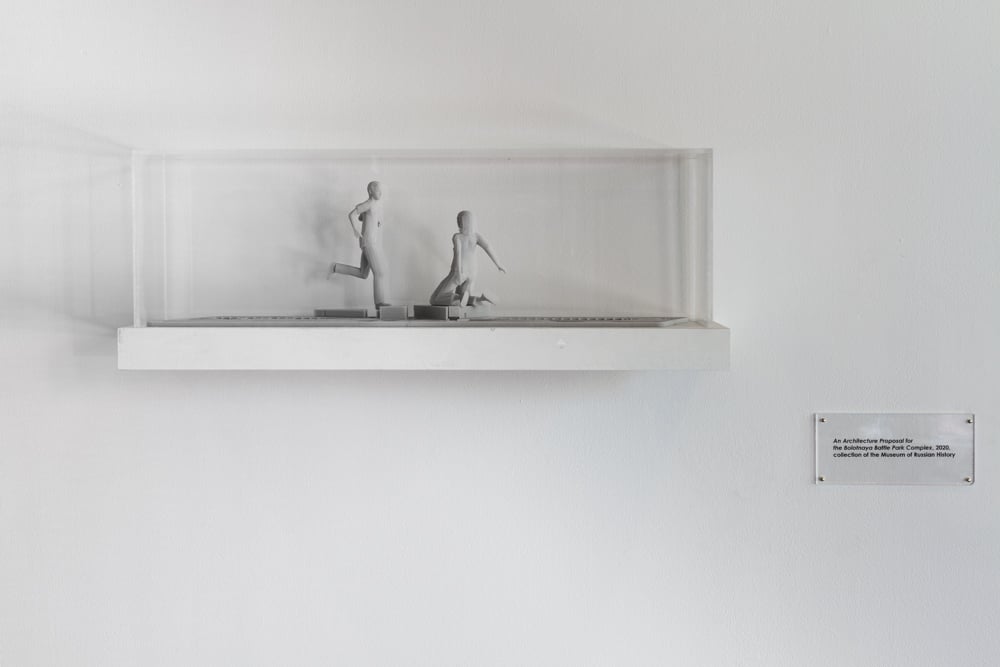
© » KADIST
Arseny Zhilyaev
The Bolotnaya Battle Park Complex is the future home for the Museum of Russian History (M. I. R.). Located on the grounds of Bolotnaya square in Moscow, this park sits on top of what once was a swamp. Above the main building stand two bio-engineered ‘living sculptures’, which strike various poses to commemorate the brave acts of those defending the federation from foreign intervention during protests of May 6th, 2012.
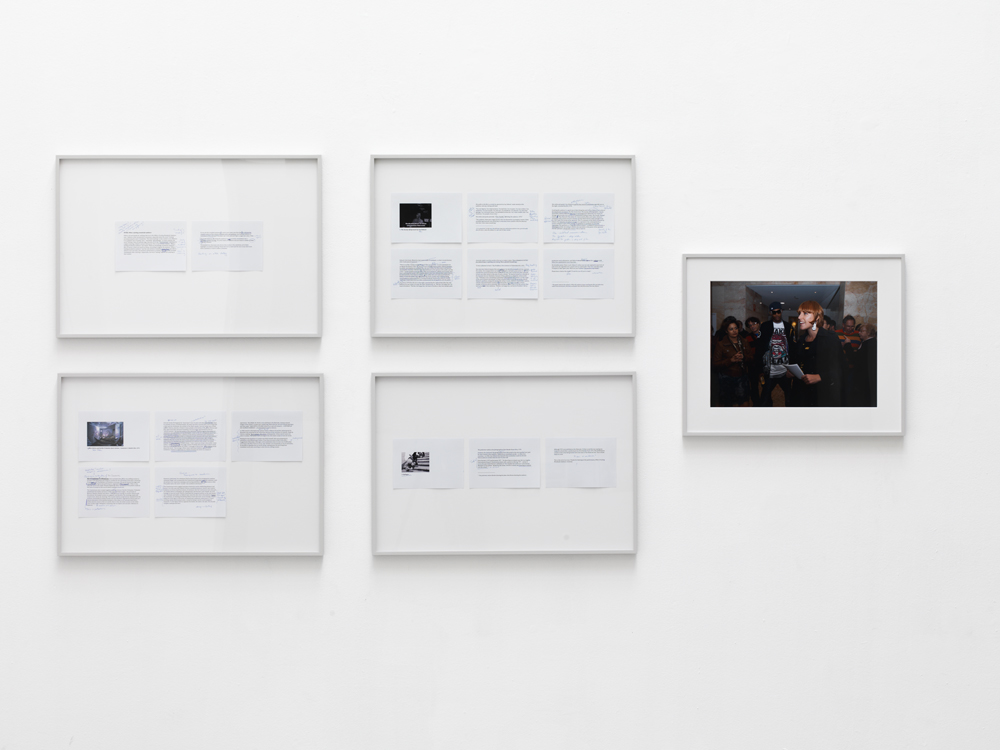
© » KADIST
Dora Garcia
Drawing & Print (Drawing & Print)
Dora Garcia’s work is a result of institutional critique and more generally that of language, following the conceptual artists of the 1960s like Weiner and Kosuth and Fraser from the 1980s and 1990s. What a fucking wonderful audience (2008) is positioned conveniently at the crossroads of several trends identified in the work of the artist. The performance from which it is derived, was made at the Biennale of Sydney in 2008, taking the form of a guided tour at the Museum of Modern Art in Sydney and focuses on artworks that were not physically present.

© » KADIST
Erika Tan
APA JIKA, The Mis-Placed Comma is one of three works Erika Tan filmed within exhibition spaces during the final stages of their transition from colonial period law courts to the National Gallery Singapore. Part of an on-going body of work, this video focuses on the figure of a forgotten weaver, Halimah Binti Abdullah, who participated in the 1924 British Empire Exhibition in the United Kingdom. A minor figure in the exhibition histories of what was formerly known as Malaya (today, Singapore and Malaysia), Halimah exists as a series of footnotes, gaining historical attention only for the act of a premature death from pneumonia, in London and away from home.

© » KADIST
Arseny Zhilyaev
His large installation entitled The Museum of Proletarian Culture (2012) looked at the changes in artistic practice that have occurred in Russia throughout the last thirty years – from the amateur art of the late Soviet era to the commercialized post-Soviet cultural practices and the more recent self-expression via contemporary social networks. Thus, the exhibition becomes a whole installation where it is impossible to distinguish architecture from assemblage, facts from fantasy, document from fiction. It is a museum of museums where viewers find themselves in the era of didactic exhibitions; whereby the main protagonists are workers, engineers, and amateur artists, and finally replaced by the creative class of 1990s and 2000s.

© » KADIST
Ali Cherri
As a discipline born at the same time as colonialism, archeology is struggling to rid itself of this sad context. It is simultaneously the science of the creation and the restoration of ruins. Ali Cherri is interested in auctions of archaeological objects and the desire they inspire in this context.

© » KADIST
Juan Capistran
The Breaks reflects Capistran’s interests in sampling and fusing different cultural, social, and historical sources. Growing up in an African-American community in Los Angeles, Capistran has long been influenced by hip-hop culture. The photographs in this print document him surreptitiously breakdancing on Carl Andre’s iconic lead floor piece after the guards at the Los Angeles County Museum of Art have left the gallery.

© » KADIST
Michael Rakowitz
The Ballad of Special Ops Cody by Michael Rakowitz is a serio-comic stop motion animated film in which an everyday African-American G. I. character, personified through an action figure that comes to life. The protagonist breaks into Chicago’s Oriental Institute to “liberate” Mesopotamian votive statues, who are likewise animated through voice-over narration, from their imprisonment in the museum’s vitrines. This set-up allows for meditations on various war and colonial histories; as a barbed twist on the Bush-era rhetoric of promoting “democracy” in the Middle East through regime change, the G. I. cannot understand why the statues wish to remain in the museum and not return to their (currently war torn) “homelands”.

© » KADIST
Regina José Galindo
La Sombra (The Shadow) is a video of Regina Jose Galindo performing with a moving Leopard tank. The artist runs until exhaustion across a dirt field in what looks like a military site. Recorded for the camera, and projected on loop, the video performance was created for Documenta 14.

© » KADIST
Francis Alÿs
The Nightwatch , which is an ironic reference to the celebrated painting by Rembrandt, follows the course of a fox wandering among the celebrated collections of the National Portrait Gallery in London. The path of the fox, from galleries containing 16th, 17th and 18th century portraits of historic figures from British history hung on plush walls, is circuitous and seemingly random. The fox tracks back and forth, sometimes inspecting the gallery furniture, often walking through the middle of the room but sometimes around its perimeter until eventually it climbs on top of a showcase, covered in fabric where he settles down to sleep.

© » KADIST
Simon Starling
Invited in 2007 to the Museum Folkwang in Essen (Germany), Simon Starling questioned its history: known for its collections and particularly for its early engagement in favor of modern art (including the acquisition and exhibition of works by Cézanne, Gauguin, Van Gogh, Matisse), then destroyed during the Second World War, the museum was pillaged for its masterpieces of ‘degenerate art’ by the nazis. Starling found photographs of a hang dating back to 1929, taken by Albert Renger-Patzsch, the German New Objectivity photographer. Firstly, he researched the artworks that were presented then which for the most part had been restituted or acquired by private collectors after the war.
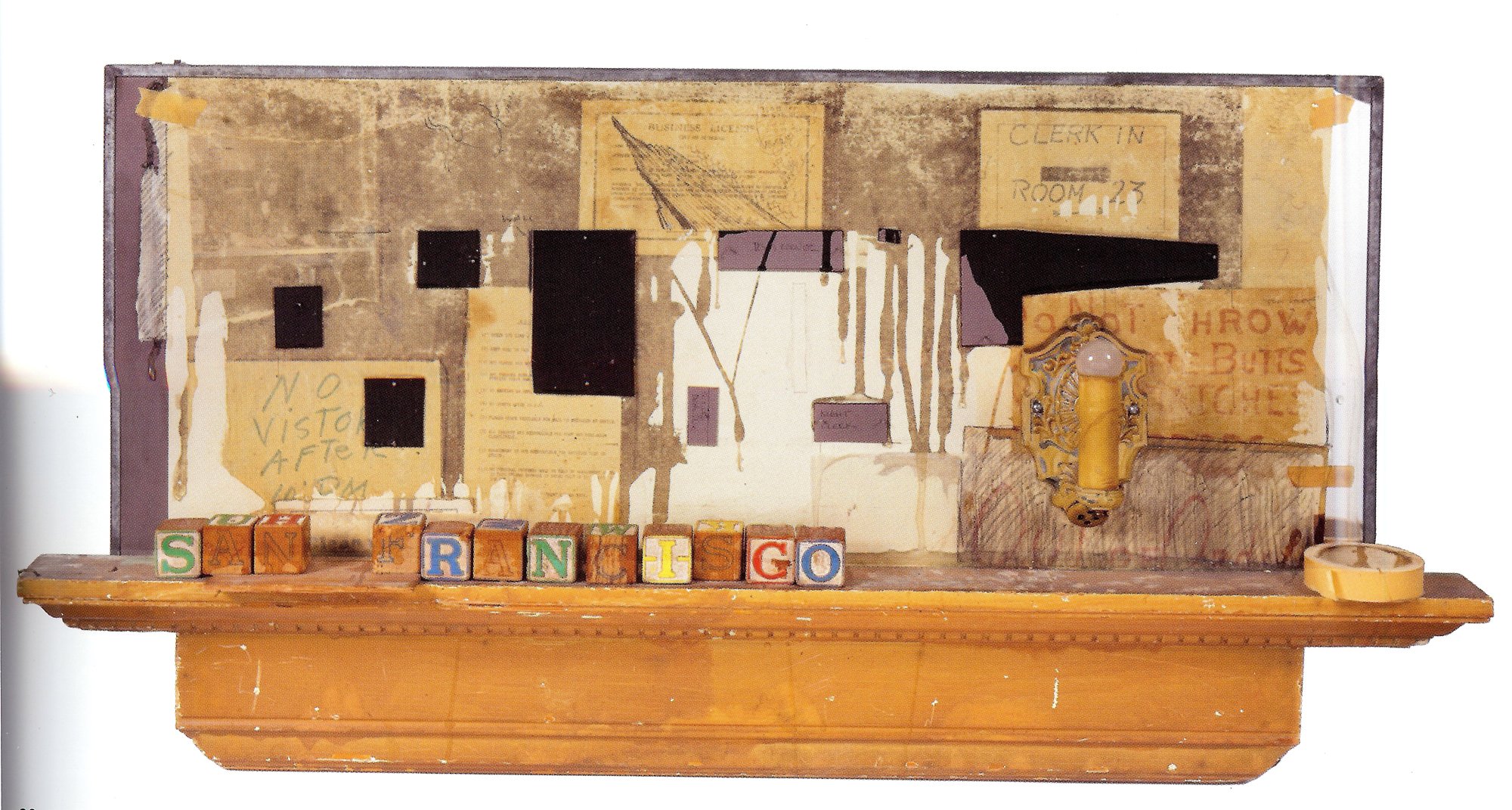
© » KADIST
Edward Kienholz
Untitled (San Francisco) was made in Idaho in 1984 and was facetiously dedicated to Henry Hopkins, the then director of the San Francisco Museum of Art who added “modern” to its name. Assembled from the remnants and found objects from a hotel room, including a collage, shelf and small lamp, this playful piece—a satirical shrine of sorts—echoes the decidedly un-modern spirit of San Francisco’s bohemian culture. Kienholz’s works, with their critical and anti-establishment content, are often linked to the 1960s Funk Art movement in the Bay Area.
Arseny Zhilyaev
Arseny Zhilyaev is arguably one of the most influential contemporary Russian artists of his generation...
Hikaru Fujii
Hikaru Fujii utilizes film to bridge art and social activism...
Erika Tan
Erika Tan’s practice is primarily research-driven with a focus on the moving image, referencing distributed media in the form of cinema, gallery-based works, Internet and digital practices...
Simon Starling
- location: Copenhagen, Denmark
- year born: 1967
- gender: male
- nationality: British
- home town: Epsom, United Kingdom
Michael Rakowitz
Michael Rakowitz uses the novel charm of everyday things to excite new and oblique approaches to loaded geopolitical subject matter...
Edward Kienholz
- location: Los Angeles, California
- year born: 1927
- gender: male
- nationality: American
- home town: Fairfield, Washington
Ali Cherri
The work of Ali Cherri, currently based in Beirut and in Paris, travers the traces of war in Lebanon in the landscape and in the collective memory...
Emma Wolukau-Wanambwa
Emma Wolukau-Wanambwa is an artist, researcher, and convenor of the collective the Africa Cluster of the Another Roadmap School, a project fostering conversations about art and education in Africa...
Juan Capistran
- location: Los Angeles, California
- gender: male
- nationality: Mexican American
- home town: Guadalajara, Mexico
Dora Garcia
Dora Garcia was born in 1965 in Valladolid, Spain...
-
1980-1989
Edward Kienholz
1984Untitled (San Francisco) was made in Idaho in 1984 and was facetiously dedicated to Henry Hopkins, the then director of the San Francisco Museum of Art who added “modern” to its name...
-
2000-2009
Juan Capistran
2002The Breaks reflects Capistran’s interests in sampling and fusing different cultural, social, and historical sources...
Francis Alÿs
2004The Nightwatch , which is an ironic reference to the celebrated painting by Rembrandt, follows the course of a fox wandering among the celebrated collections of the National Portrait Gallery in London...
Emma Wolukau-Wanambwa
2005A short video about Tate Modern by Emma Wolukau-Wanambwa depicts just two shots, both featuring the artist...
Simon Starling
2007Invited in 2007 to the Museum Folkwang in Essen (Germany), Simon Starling questioned its history: known for its collections and particularly for its early engagement in favor of modern art (including the acquisition and exhibition of works by Cézanne, Gauguin, Van Gogh, Matisse), then destroyed during the Second World War, the museum was pillaged for its masterpieces of ‘degenerate art’ by the nazis...
Dora Garcia
Drawing & Print
2008(Drawing & Print) Dora Garcia’s work is a result of institutional critique and more generally that of language, following the conceptual artists of the 1960s like Weiner and Kosuth and Fraser from the 1980s and 1990s...
-
2010-2019
Arseny Zhilyaev
2010Arseniy Zhilyaev (born 1984 in Voronezh, Russia) is an artist, writer and political activist who lives and works in Moscow and Voronezh...
Ícaro Lira
2012Icaro Lira has been developing the project “Museum of the Foreigner” since 2015, in which he recounts the trajectories of populations inside Brazil, from the north to the big cities of the south...
Arseny Zhilyaev
2014The Bolotnaya Battle Park Complex is the future home for the Museum of Russian History (M...
Ali Cherri
2017As a discipline born at the same time as colonialism, archeology is struggling to rid itself of this sad context...
Michael Rakowitz
2017The Ballad of Special Ops Cody by Michael Rakowitz is a serio-comic stop motion animated film in which an everyday African-American G...
Hikaru Fujii
2019Les nucléaires et les choses by Hikaru Fujii is the first video produced in the artist’s long-term project focusing on the Futaba Town Museum of History and Folklore, located in the “difficult-to-return zone” since the Fukushima Daiichi nuclear accident in 2011...
-
2020-2029
Hikaru Fujii
2020The film The Anatomy Classroom is part of a research project developed by Hikaru Fujii around objects and artifacts evacuated from the Futaba Town Museum of History and Folklore, which is located in the “difficult-to-return zone” since the Fukushima Daiichi nuclear accident...
Hikaru Fujii
2020COVID-19 May 2020 by Hikaru Fujii was filmed during the first months of the Covid-19 pandemic...





